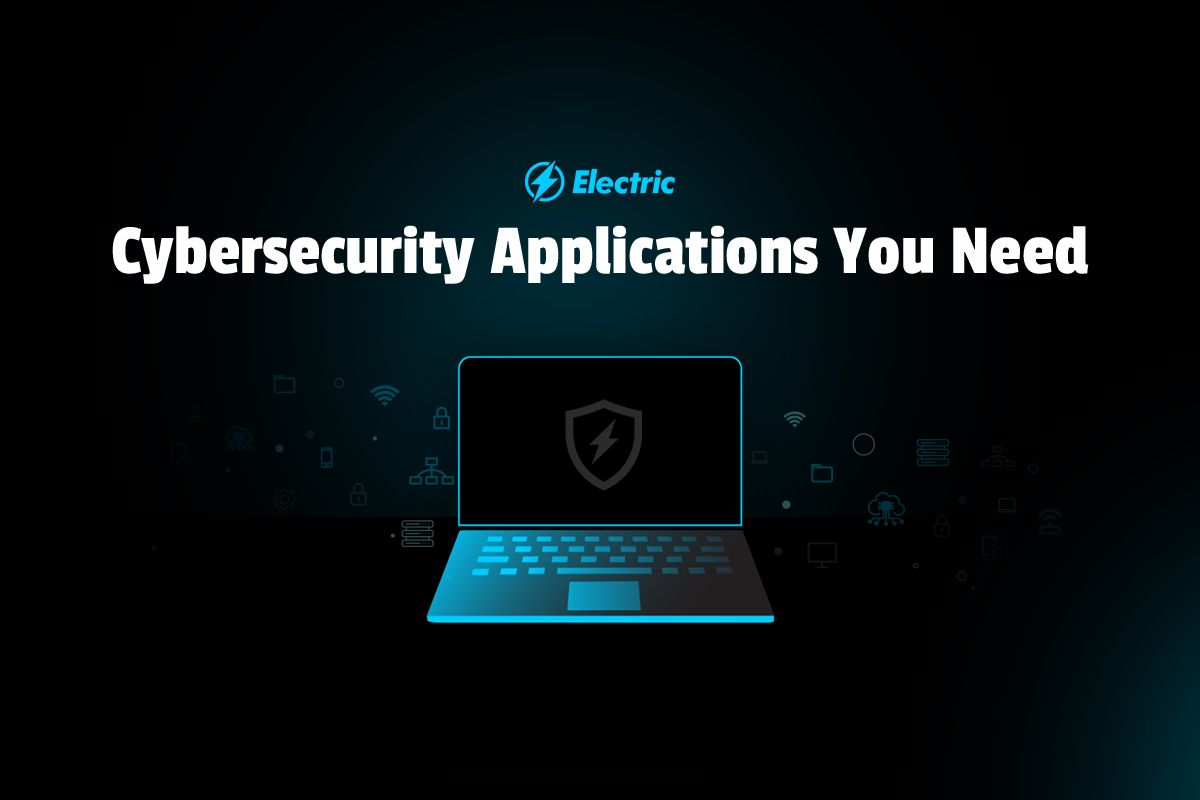
Cyber attacks against small businesses are becoming more frequent and more severe. In a volatile online environment, Small businesses need to take proactive steps to protect their data and ensure business continuity as cyber threats will only increase in the future of IT. One effective approach to strengthening your defenses is to employ the use of cybersecurity applications and tools. This article will outline the most critical cybersecurity resources for small businesses and how they can help protect your organization.
What are Cyber Security Apps?
Cybersecurity applications help businesses to protect their systems, network, devices, and data from cyber attacks. These applications are highly sophisticated and can be used to detect, block, monitor, and manage your network, and provide you with reports on suspicious activity. Generally, they are part of a comprehensive security strategy that also entails firewalls, intrusion detection and prevention systems (IDPS), anti-virus, and more.
Why do Businesses Need Cybersecurity Apps?
Cybersecurity apps can help businesses meet their data protection requirements by providing them with the tools needed to detect, block, and manage cyber attacks. As such, they play a significant role in compliance with industry regulations and legislation.
Cybersecurity apps also help businesses protect their brand reputation. In the event of an avoidable data breach, customers will lose trust in a company that doesn’t have adequate security measures in place. In the worst case scenario, cybersecurity apps can also help businesses recover quickly from attacks by identifying the source and taking steps to mitigate the damage.
While cybersecurity apps are an essential part of any security strategy, they’re only one piece of the puzzle. Businesses also need to have policies and procedures in place to support their security efforts.
The 9 Best Cybersecurity Apps for Businesses
Unfortunately, small to medium-sized businesses tend to be more likely to neglect their cybersecurity, and are often the target of cyber attacks as a result. These attacks can pose devastating consequences of financial loss, tarnished business reputation, and legal penalties, which is a compelling reason to implement the right mix of cybersecurity apps and software.
There are several different types of cybersecurity apps available, each with its own set of features and benefits:
1. Firewalls
A firewall is a network security system that monitors and controls incoming and outgoing traffic. Firewalls are helpful in accessing private networks and can be used to protect against a variety of threats, including viruses, worms, and Trojans.
2. Intrusion Detection and Prevention Systems (IDPS)
An Intrusion Detection and Prevention System (IDPS) is a network security system that monitors traffic for any signs of intrusion or malicious activity. It takes action against any suspicious activity it detects, such as blocking traffic or sending an alert. IDPS can be hardware or software-based, and they’re passive entities capable of detecting, preventing or shutting down suspicious attacks.
3. Anti-virus Software
Anti-virus software is a type of security software designed to detect, block, and remove viruses. It’s typically used with other security measures, such as firewalls and IDPS. Faced with an ever-growing number of new threats, anti-virus is essential for small businesses.
4. Data Loss Prevention (DLP)
Data loss prevention (DLP) software is designed to prevent data from being lost or stolen. It detects and prevents breaches of sensitive data and includes measures such as encryption, data leak detection, and user activity monitoring.
5. Role-Based Access Control (RBAC)
Role-Based Access Control (RBAC) restricts access to computer systems and networks based on the user’s role. For example, a business might allow employees to access certain parts of their network but restrict access to other functions, such as the human resources or finance department. Business managers can implement RBAC in hardware or software, and it’s often used in conjunction with other security measures, such as firewalls and IDPS.
6. Network Security Monitoring
Network security monitoring is the process of continuously monitoring a network for signs of intrusion or malicious activity. It’s typically used with other security measures, such as firewalls, antivirus and IDPS. Network security monitoring can be performed manually or using automated tools.
7. Identity and Access Management (IAM)
Identity and Access Management controls who has access to what. It’s typically used to control access to computer systems, networks, and data. IAM can be implemented in hardware or software, and it often uses role-based access control (RBAC) to restrict access to specific parts of a system. With solution providers such as Okta, managers can control who can access what, when they can access it, and for how long.
8. Endpoint Detection and Response (EDR)
Endpoint Detection and Response (EDR) is designed to detect, investigate, and respond to endpoint-related threats. It’s typically used alongside other security measures, such as firewalls, anti-virus, device management, and IDPS. EDR can be performed manually or using automated tools, preventing stolen user credentials, Advanced Persistent Threats (APT), and malicious scripts.
9. Application Security
Application security protects vital business applications from being compromised. It includes measures such as code signing and application whitelisting, and can help standardize your security policies through multi-factor authentication and file sharing privileges.
Don’t Overlook the Importance of Cybersecurity Apps
Your business is only as strong as your weakest cybersecurity link. While you may have a robust defense against cyber attacks, one weak spot can leave you vulnerable. That’s why it’s essential to have an arsenal of cybersecurity apps at your disposal to protect your data and systems. Not sure where to start? Contact our team of experts to develop a cybersecurity plan that fits your specific needs and keeps you safe from hackers.



